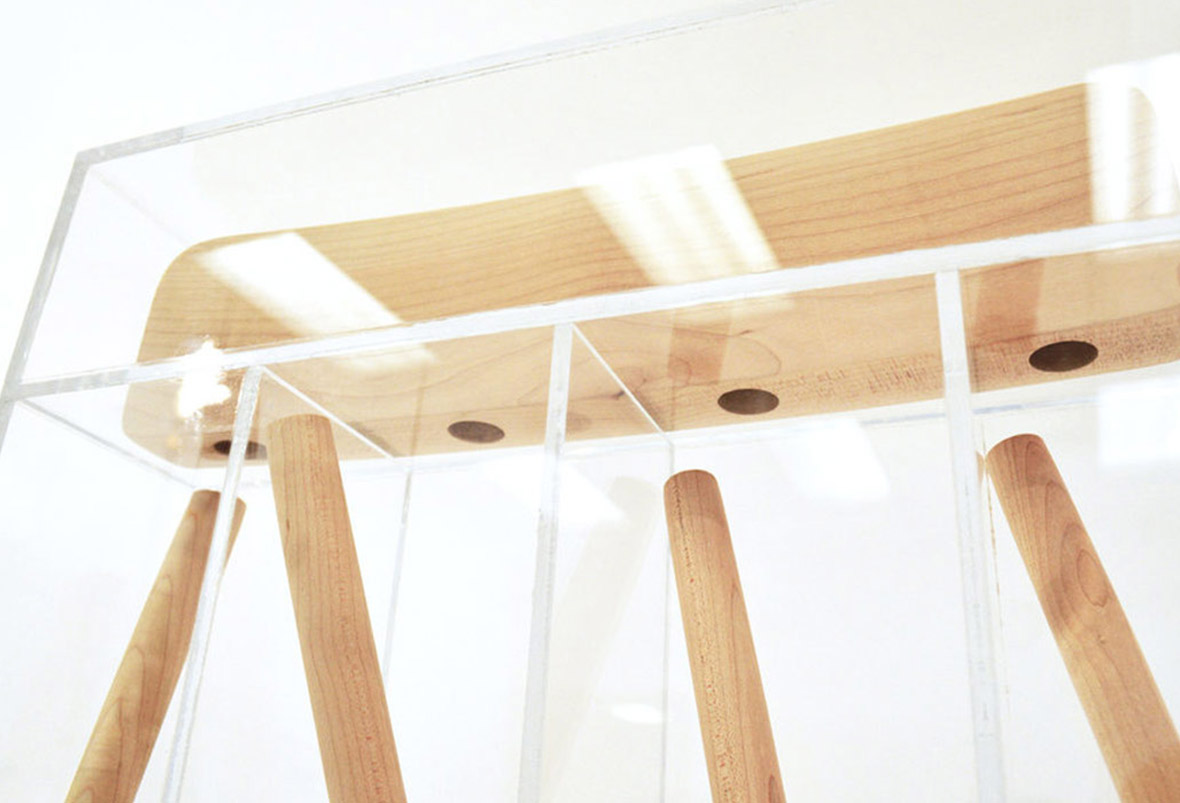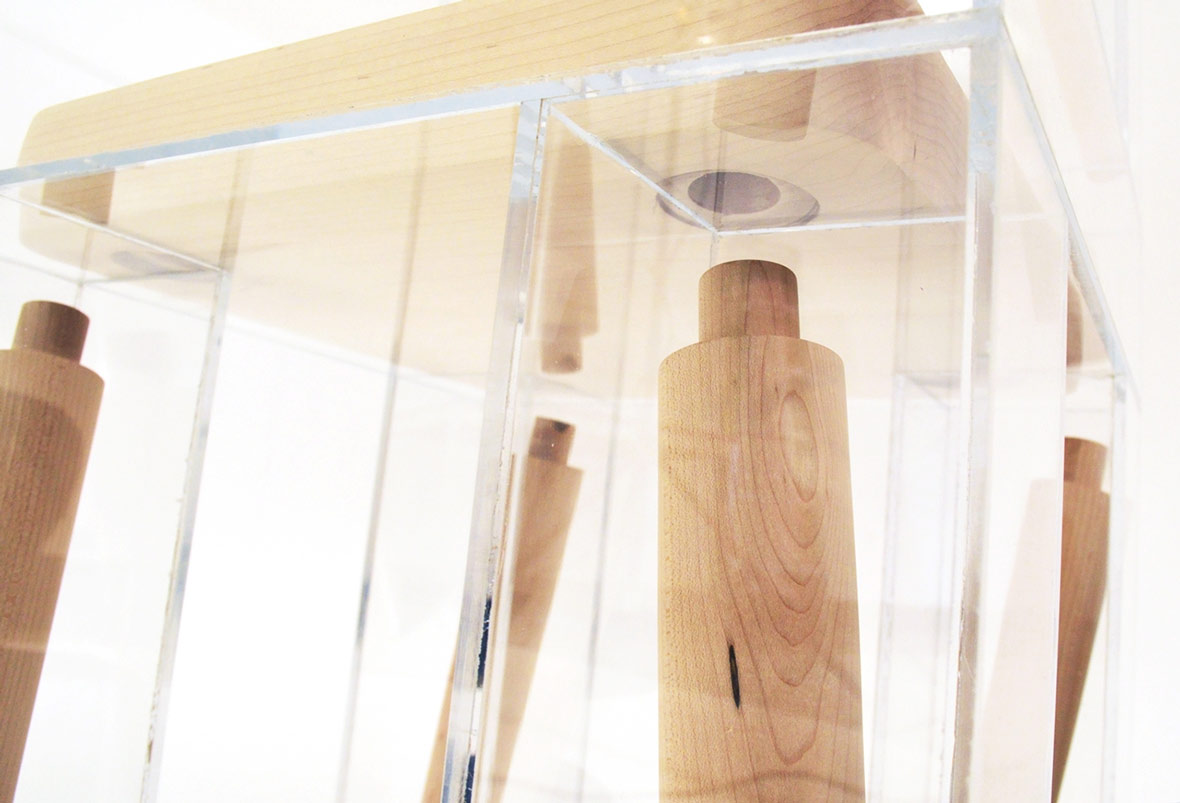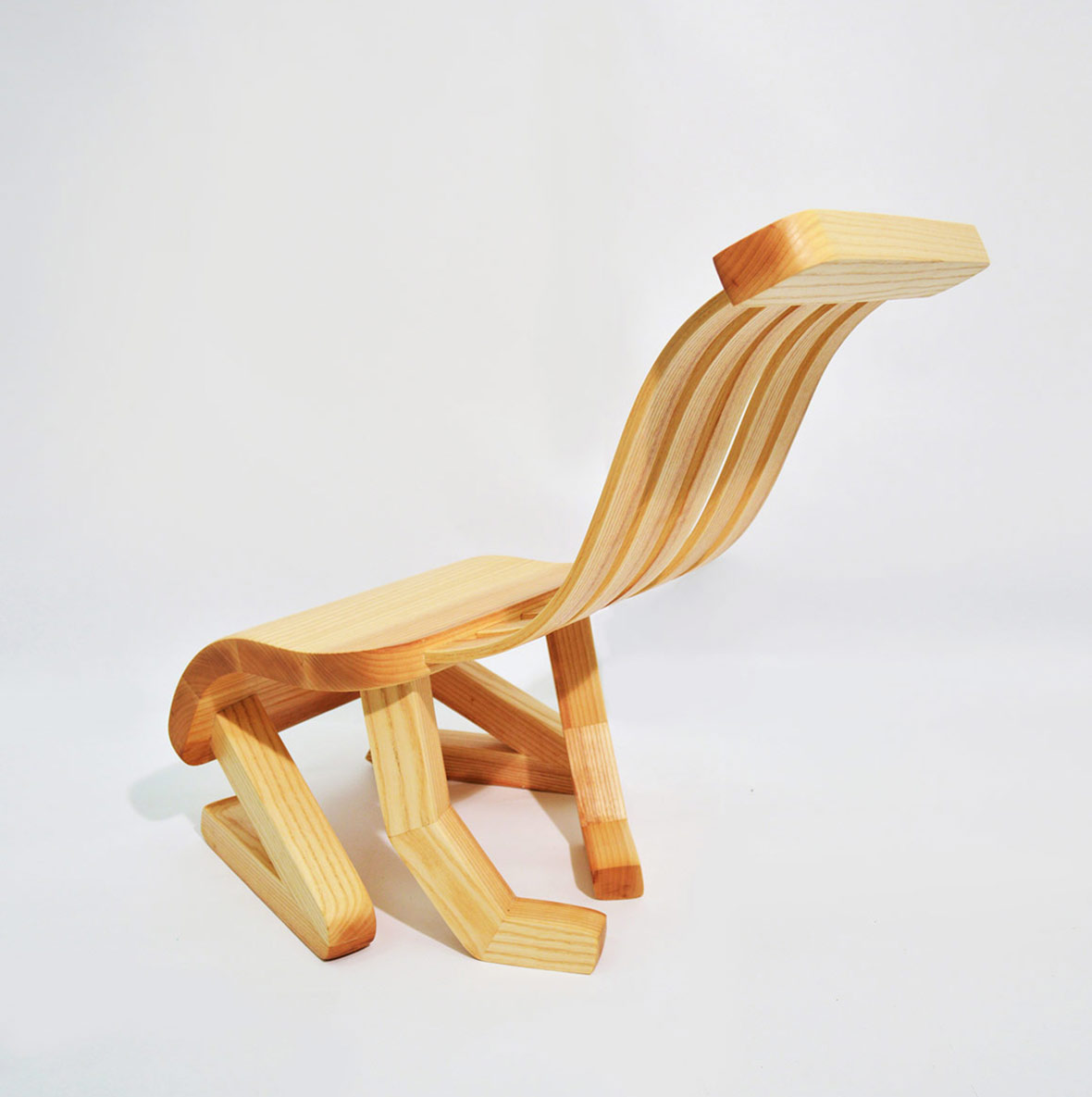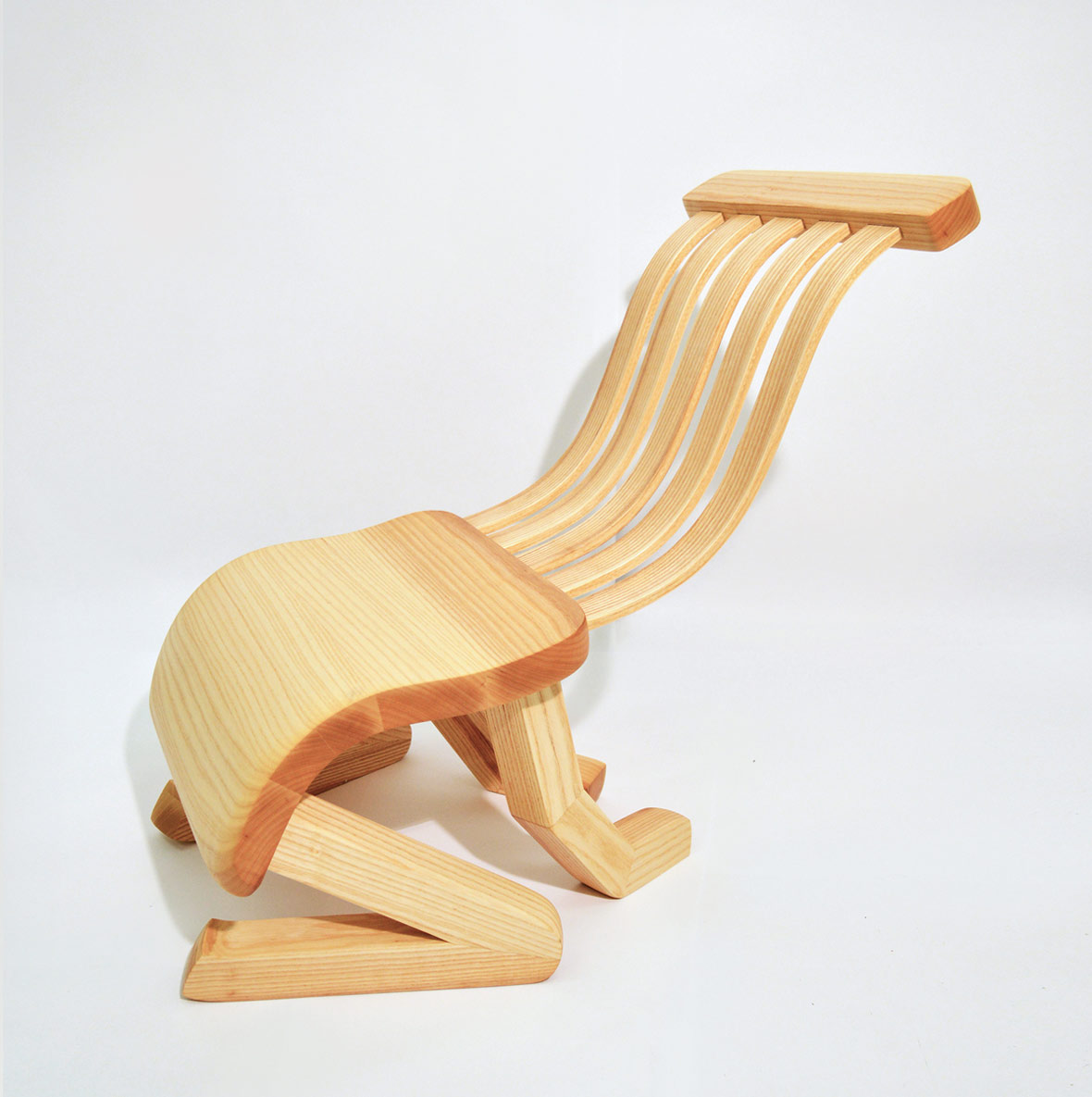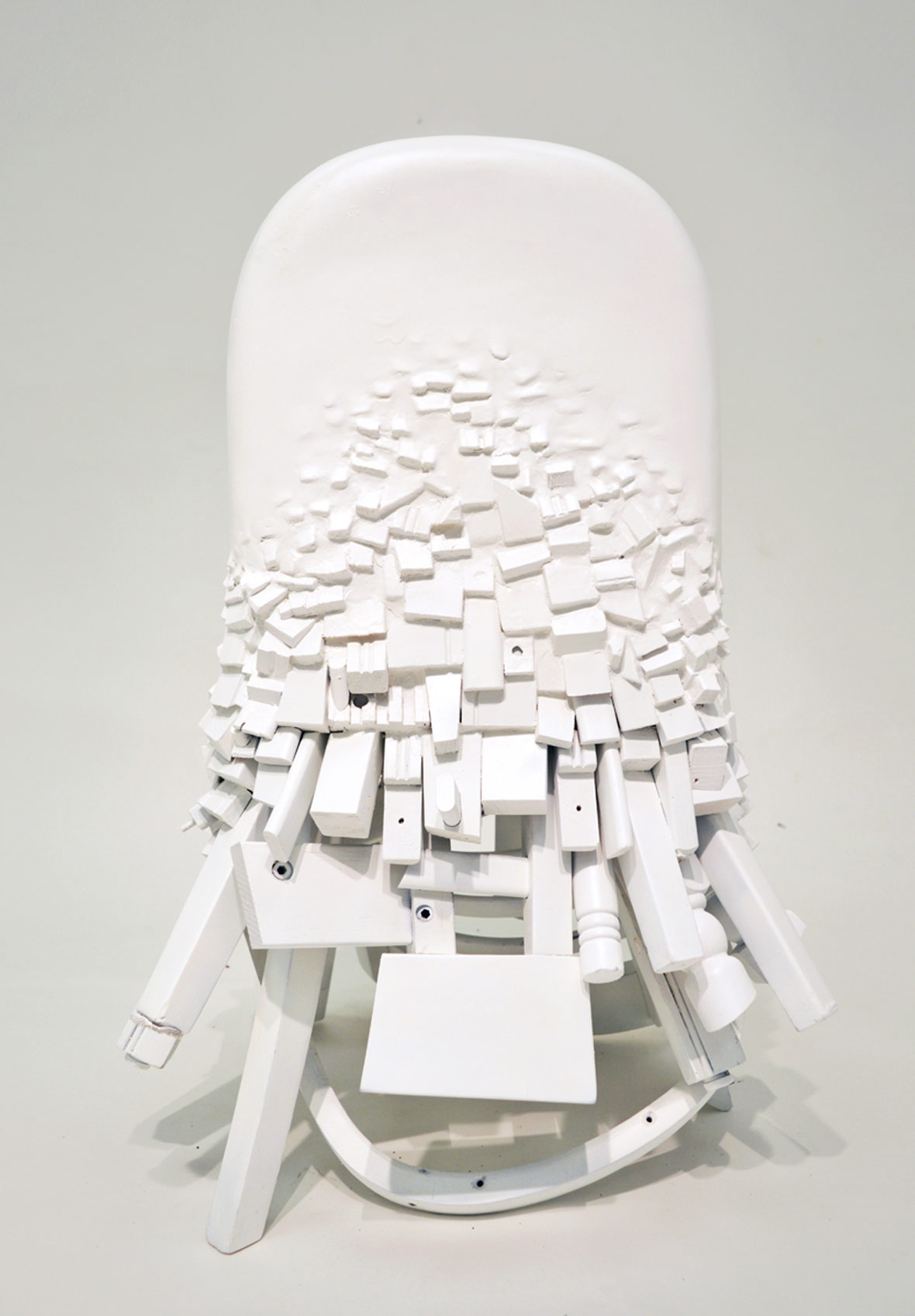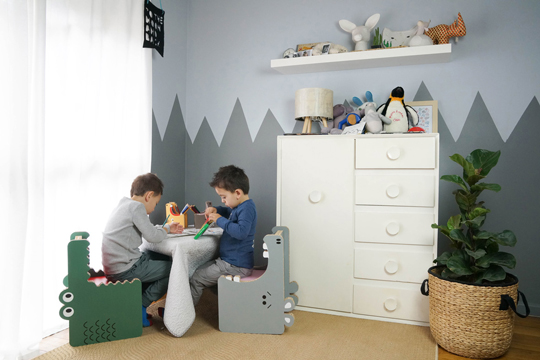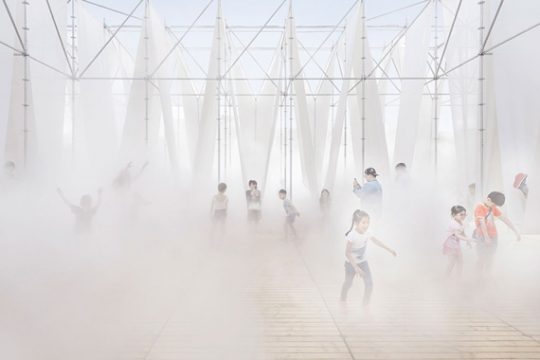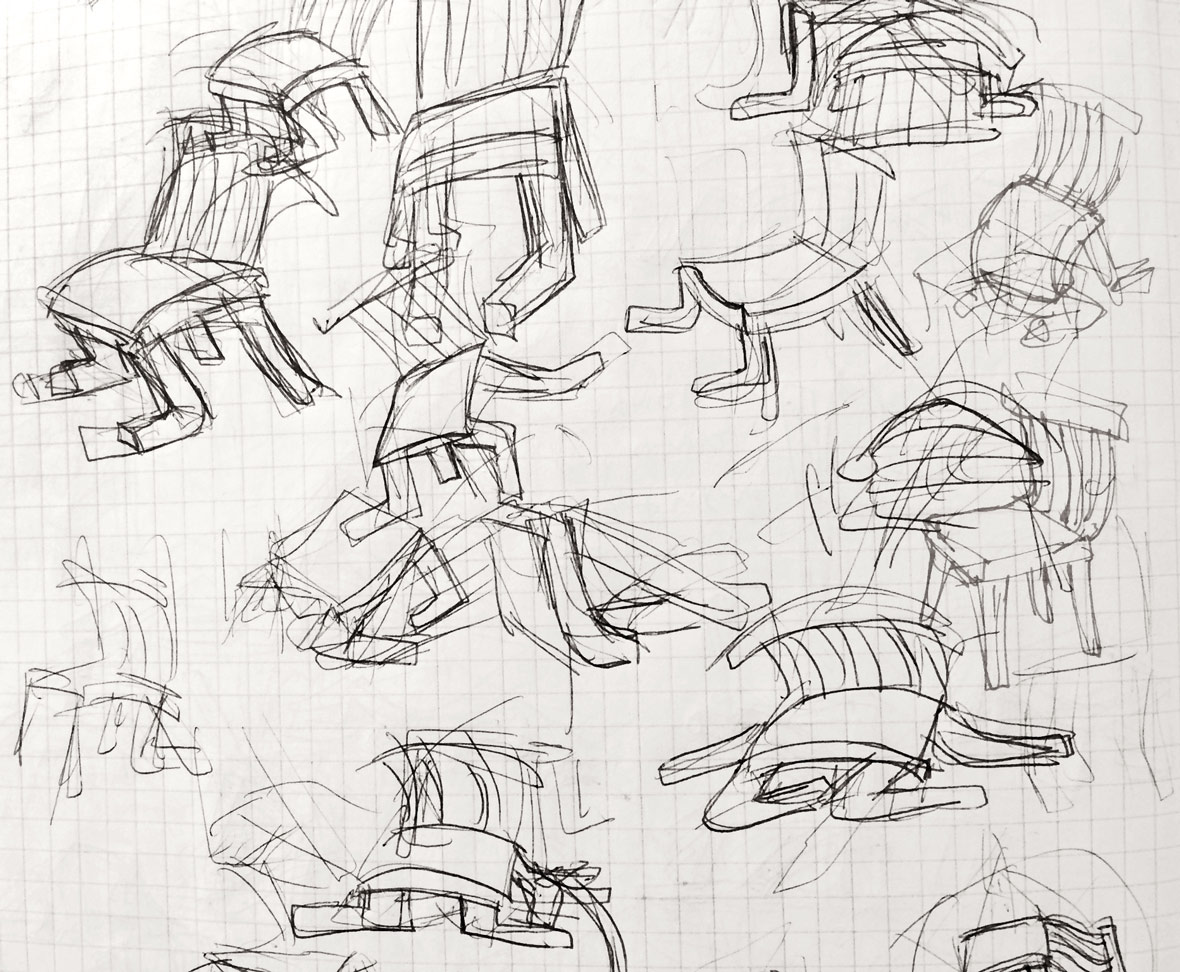
Chairs, having existed since the beginning of civilization, have taken on different forms as society and technology evolved. And for Joyce Lin, an American-born Taiwanese artist and designer, chairs are much more than inanimate objects for people to rest their buttocks on – they’re iconic, familiar, and possess anthropomorphic qualities that parallel the human form. “I think that furniture objects are powerful because whether they’re practical or not, they evoke a type of environment that is accessible to most everyone,” Lin explains of her fascination. “To me, furniture represents reality. So when I use it in my work, I see myself manipulating or altering that reality.”
自人类文明诞生以来,椅子就已经存在,并随着社会和技术的发展而呈现出不同的形式。Joyce Lin是一名生于美国的台湾艺术家和设计师,对她来说,椅子不仅仅是供人坐下的无生命之物,它更是一种符号——它们有一种亲切感,还被赋予了一种拟人化的性质。“我认为家具蕴含巨大的能量,因为无论它们是否实用,都能令人们联想起一种大多数人都能拥有的环境。”Joyce解释说,“对我来说,家具代表着现实。所以当我使用家具创作时,我会感觉自己是在操纵或改变某个现实。”
As a recent graduate with a double major in both biology and furniture design – two seemingly unrelated fields – the 23-year-old designer realized that she can take concepts from the former and integrate it into the latter. “Biology and geology have given me a lot of insight into understanding internal structures and systems on a broad scale,” Lin shares. “They tell us where we, and everything in our environment, come from, how they have evolved over time, and how they are evolving now. It challenges my assumptions about how and why things work – how parts come together or fall apart – which translates to how I work in the studio. Learning about science keeps me interested and makes me love and care about the world in a way that I hope is expressed in my work.”
作为一名刚毕业的23岁设计师,Joyce同时修读了生物学和家具设计——两个看似毫无关联的专业,她发现,自己可以从生物学的一些概念中获得灵感,然后将其融入到家具设计中。“生物学和地质学给了我很多洞察,帮助我从更广泛的范围去深入去了解事物的内部结构和系统。”Joyce解释道,“这两个学科能告诉我们,人类以及环境中的一切来自哪里,是如何随着时间的推移而演变,今后又会如何发展。它挑战了我对于事物如何和为什么会运作的种种假设和想法,每个部件如何组合、如何分解,这些最后都成为了我在工作室里创作的思路。学习科学让我始终对外界满怀兴趣,从而更能去热爱和关心这个世界。我希望这一点能最终体现在我的作品中。”
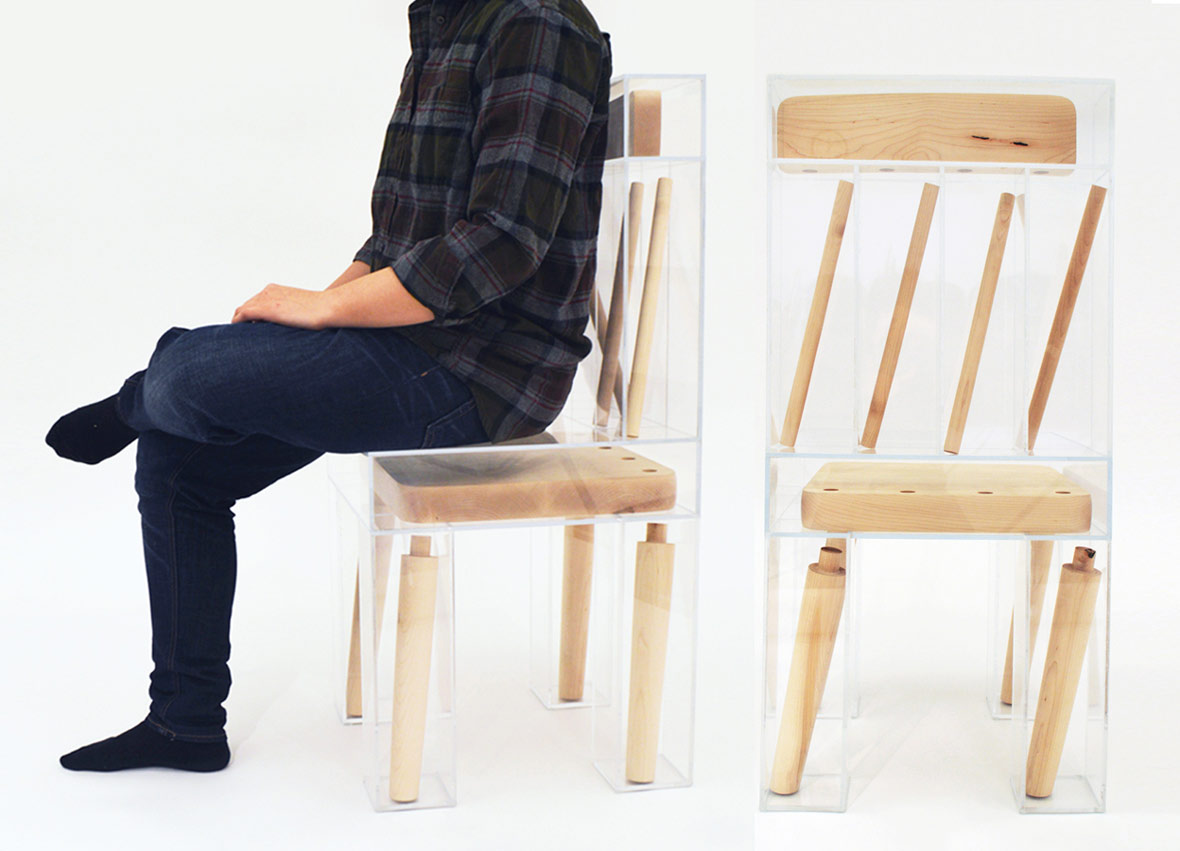
For Exploded Chair, one of Lin’s most well-received project, she dissects a wooden spindle chair, encasing its dismembered parts within transparent acrylic containers. Each individual piece that makes the chair whole is isolated and shifts freely in their respective containers. While most people naturally believe that these disembodied pieces of wood are what makes the chair a chair, Lin’s reimagining of the traditional chair challenges this concept. This project plays off of the audience’s expectations and is her way of making viewers question the function of a chair and contemplate the role of different materials as well as the meaning of permanence.
在Joyce颇受好评的作品之一《Exploded Chair》(肢解座椅)中,她解剖了一张木椅,将“肢解”下来的部分再各自装进透明的亚克力容器里。曾组合椅子的各个部位,现在都被单独隔开了,在各自的容器里兀自晃动。大多数人自然会觉得,是由于这些“肢解”的部件才能形成了一张椅子,但Joyce对传统座椅的重新设计,摆脱了这个概念。这个设计挑战了观众的期望,使观众质疑椅子的功能,思考不同材料的作用以及永恒性的意义。
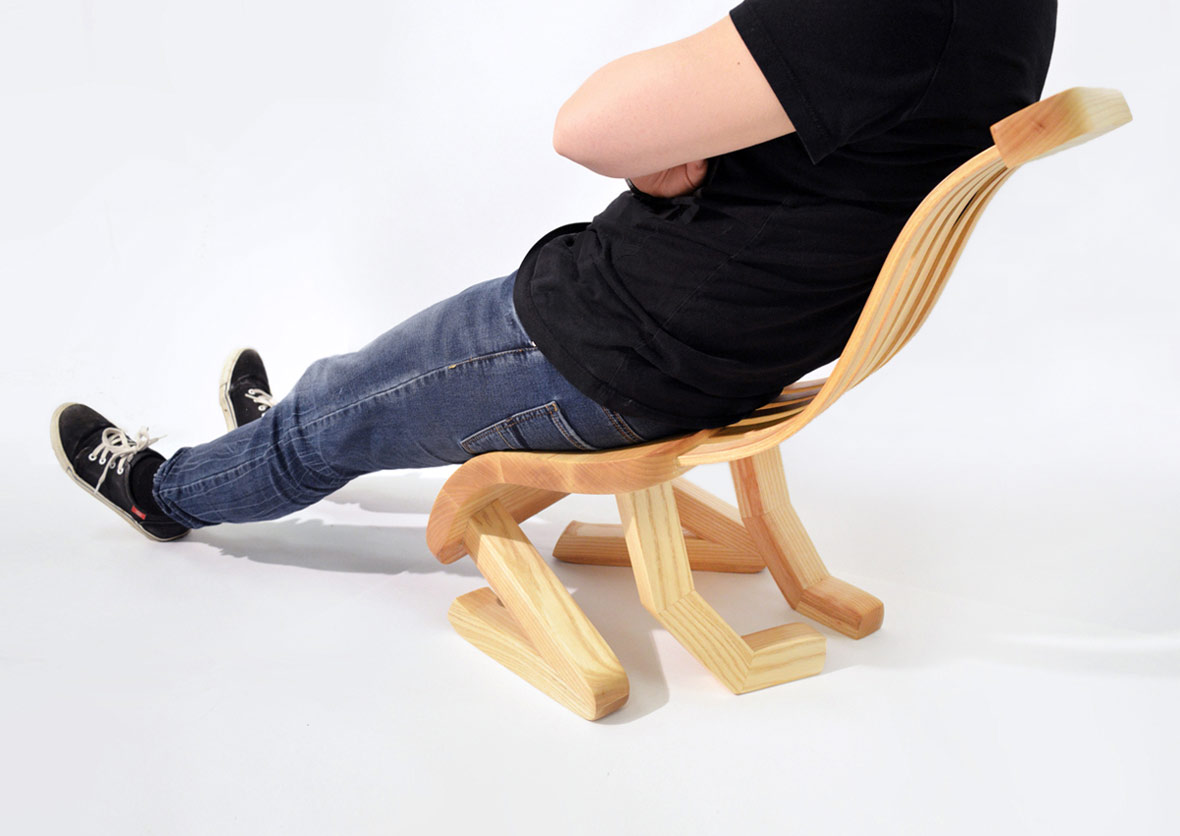
In an older project, titled Used Chair, Lin manipulates the anthropomorphic elements that she’s observed in the seating furniture with the idea of creating a “subservient” chair. The final creation bends the traditional wooden legs into human-like limbs, positioned to almost look as if the chair was groveling on its knees. Lin intended for this project to be a statement piece on the relationship dynamic between people and objects. In a separate project, titled Fused Chair, Lin salvaged parts from five discarded chairs. The bottom part of the final creation is formed of distinctively identifiable parts from the original chairs. Moving up, they begin to disintegrate into generic cubic shapes before finally forming into a smooth seating surface and back support. Presenting the chair’s evolution in three different stages, this piece is meant to display the gradual process of change and visualize how materials transform into a final product.
在此前的一个项目《Used Chair》(二手椅)中,Joyce重新设计她在椅子上观察到的那些拟人化元素,打造出一张“顺从”的椅子。她将传统的椅子木腿被弯曲成像人一样的四肢,看起来,这把椅子几乎就像跪在了地上。在另外的项目《Fused Chair》设计中,Joyce的目的是探讨人与物之间的关系动态。这件作品是Joyce从五把椅子上取出零件,最终组装而成的。在椅子的底部,她所使用的5张椅子的不同部件还清晰可辨。这些部件开始分解成一般意义的立方形状,一步步往上堆叠,直到最终融合成一个光滑的椅座和椅背部。这一设计呈现出椅子演变的三个不同阶段,用来表达变化的渐进过程。
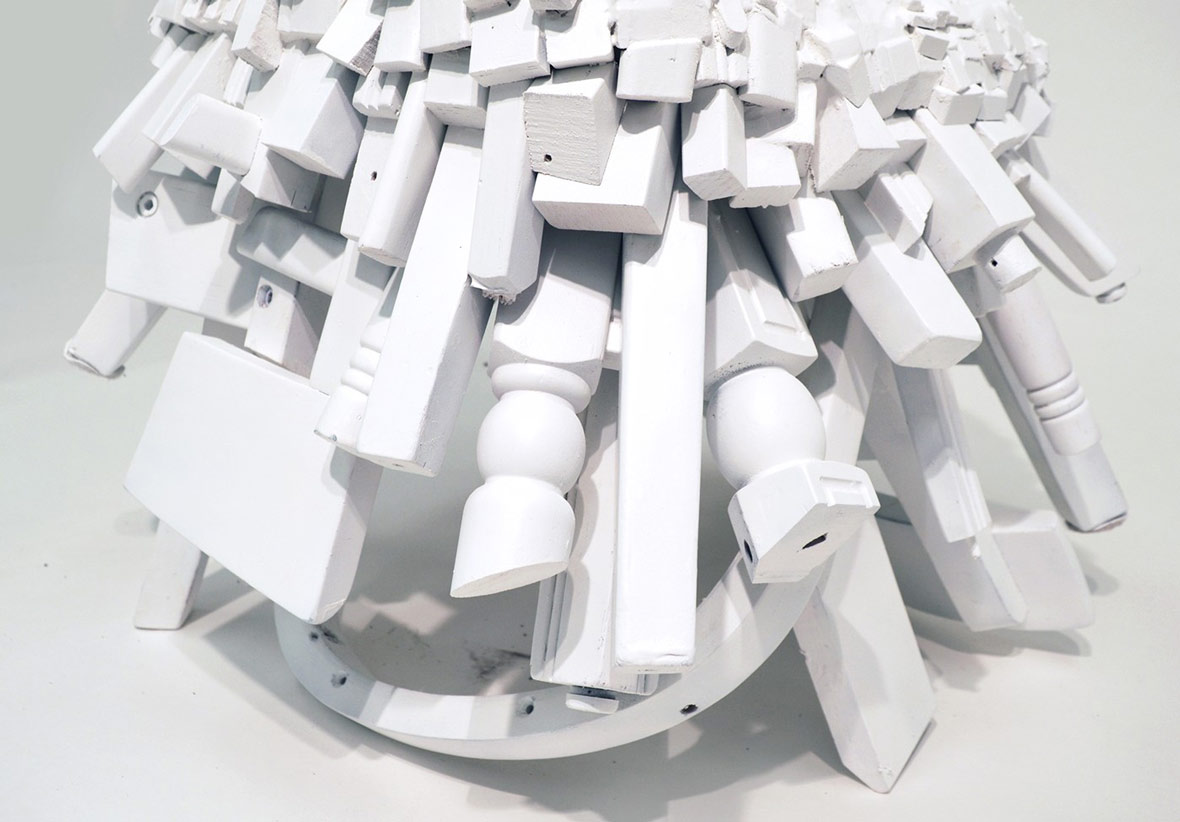
Viewing Lin’s work, the often hard-to-discern line between art and design might feel even blurrier. But she shares her understanding of the key differences between the two, explaining that she sees art as being more about expression, research, and communication while design is about applying research towards a practical goal. “Of course, you can do both at once,” she adds. “Most things hold multiple functions. At the core, both are embodiments of an idea or philosophy regarding our lived experience. I’d say that my goals are more about expression and communication, but honestly, I’ll do anything that excites me. As long my work affects people in an exciting and meaningful way, I don’t care what form it takes.”
纵观Joyce的作品,你会发现艺术与设计之间原本模糊的界线变得更加模糊了。她对两者差异的理解为:艺术是一种表达、研究和交流,而设计是为了将研究应用于实际的目标。她说:“当然,两者兼得也是可以的,大多物件都具备多种功能。从本质上来说,这两者都是在诠释关于我们生活经验的想法或哲学理念。我觉得我创作时会更倾向于表达和交流,但是说实话,只要是让我觉得兴奋的项目我都会去做。我只希望作品能令人们感到兴奋和觉得有意义,什么样的形式并不重要。”

